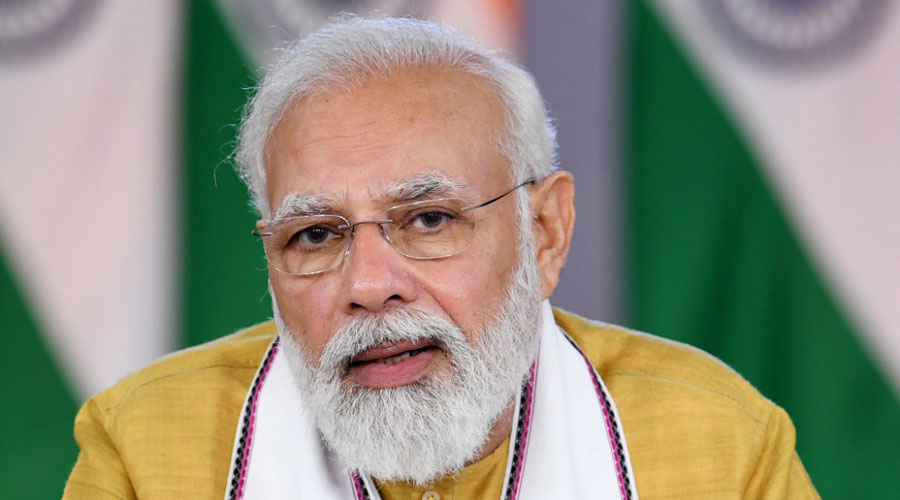Is Prime Minister Narendra Modi aiming reforms in petroleum tax regime to tideover the impact of looming high inflation
A. Harikumar
Prime Minister Narendra Modi stirred up a hornet’s nest the other day, during his interaction with chief ministers of Indian states on rising Covid cases, when he flagged the high fuel prices existing in many states, esp the opposition ruled ones. Mr. Modi’s remarks instantly attracted riposte from the opposition ruled states which said the Prime Minister was trying to pass the buck when in reality the centre was responsible for the high fuel prices.
It’s a bit intriguing that the Prime Minister chose to set off an acrimonious debate on an issue which would have remained dormant for some more time. What could be the reason?
The high retail inflation existing in India at present and its links to the surging fuel prices seem to be the reason. It calls for drastic steps to curb any sudden fuel price spike. There is high inflation globally and even the US is reeling under a high retail inflation rate of 8.5 percent. India needs to act soon to control inflation against the back drop of surging oil prices and other factors that contribute to sky-rocketing inflation.
Acting director of IMF Asia – Pacific had recently pointed out the need for India to insulate inflation from soaring crude prices. It seems Mr. Modi is trying to pressurise states with high fuel price to bring down prices before the situation goes out of hand.
Cases of state’s share of tax higher than centre
It’s true that VAT implemented on petroleum products by certain states is high and some states are getting higher share of taxes from a litre of petrol or diesel than centre. But any public discussion on it would expose chinks in centre’s petroleum pricing policy too, and would invite comparisons with the low fuel prices existing in India’s neighbourhood, which is not favourable to the union government. But even such fallouts are preferable rather than delaying decision, which could result in a situation of slippery slope if inflation shoots up.
Prime Minister’s comparisons
Mr. Modi named a few states; Maharashtra, West Bengal, Telengana, Andhra Pradesh, Kerala, Tamil Nadu etc. which failed to implement the tax (VAT) cut as suggested by the union government in November, when it cut excise duty.
The Prime Minister pointed out that some of the states, which turned out to be BJP ruled states, like Gujarat and Karnataka that cut VAT on petroleum products, notwithstanding the huge losses they suffered to the tune of 5000 crore and 3500-4000 crore respectively.
In November 2021, the union government cut central excise duty on fuels. While the central excise duty on petrol was cut by Rs 5,that on diesel was cut by Rs 10. But states like Kerala pointed out that industrialised states can afford to lose revenue from petroleum tax, but states with less income like Kerala cannot, as GST has taken away their main income sources.
Complexities of fuel tax regime
Fuel tax is not a simple tax and it consists of a litany of taxes, cess and surcharge. Sharing of taxes also involve a complex process.
Mostly, taxes make up fifty percent or more of the price of fuels in states currently. The central government taxes on the production of petroleum products while states tax on the sale. The central government excise duty on petrol is currently Rs. 27.9 peer litres and Rs 21. 8 on a litre of diesel, according to reports. Oil marketing companies (OMCs) get 42 percent of the retail price of petrol and 49 percent retail price of diesel. Dealer commission is four percent.
While the central excise duty is uniform across the country, state sales taxes (VAT) vary. For example, Odisha levies 32 percent VAT on petrol, while in UP it is 26.8 percent. VAT in Kerala is 30.8 percent. Kerala also charges 1 percent additional sales tax and Rs 1 cess on a litre of fuel. Many states impose additional levy called cess.
The cental excise duty levied on petroleum products has two components
1. basic excise duty and 2 cess and surcharge component. The centre cannot retain both parts. While it can retain the part 2 (cess and surcharge) the basic excise duty has to be distributed among states. Of the central excise duty, 44 percent is basic tax and 56 percent is cess and surcharge.
As per 15th finance commission recommendations, the 44 percent basic tax needs to be devolved. Thus states get their own VAT and surcharge, plus part of centre’s basic excise duty. But recently because of increased component of cess, the devolution to states from ceentral excise duty has decreased.
The complexity of petroleum tax structure makes it easy for debating parties to suppress certain facts and highlight only on those aspects which they want. Perhaps, Mr. Modi wanted to bring all those facts to the debating table and his offensive could be a pre-emptive move to thwart impending opposition attacks.
Thus by starting the discourse Modi could be aiming to control the discourse and set a new agenda for petroleum tax reforms. The increasing inflation in the country against the backdrop of economic crisis in the neighbouring countries might have also started irking the government. They could raise diffcult questions in the near future. Also Prime Minister could be trying to start a discussion on inclusion of petroleum products in the GST regime.

